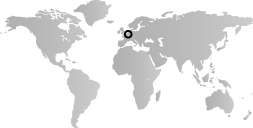The seventeenth century is rightly referred to as a Golden Age of Dutch art, as the United Provinces establishes its independence, declared in 1581 and recognized officially in 1648, from Spanish Habsburg rule. Schools of painting arise in cities such as Amsterdam, Delft, Haarlem, Utrecht, and Dordrecht, where a variety of genres are developed and the production of decorative arts flourishes. Civic bodies and wealthy lay citizens, including merchants who make their fortunes in Holland’s vast overseas trade empire, are key patrons. Meanwhile, the Southern Netherlands remains under Catholic Habsburg rule, and church commissions proliferate. The port city of Antwerp is a major cultural and commercial center and home to the two greatest Flemish masters of the age: Peter Paul Rubens (1577–1640) and Anthony van Dyck (1599–1641). The widely traveled Rubens, whose professional life extends beyond visual artistry to political diplomacy, plays a vital role in the spread of Baroque ideals from their fountainhead in Rome to the North.
During the eighteenth century, the Low Countries, exhausted by intermittent wars of the previous century for political independence and trading rights, slips from cultural prominence and wealth. Rival countries England and France meanwhile rise to great political power and economic strength, and are the seat of major intellectual developments that give rise to the Enlightenment and the Neoclassical movement in the arts and architecture. Shortly after the outbreak of the French Revolutionary Wars in 1792, the region falls under French occupation. The arts of this time are marked by the influence of French styles: the ornate Rococo and, later, Neoclassicism.


